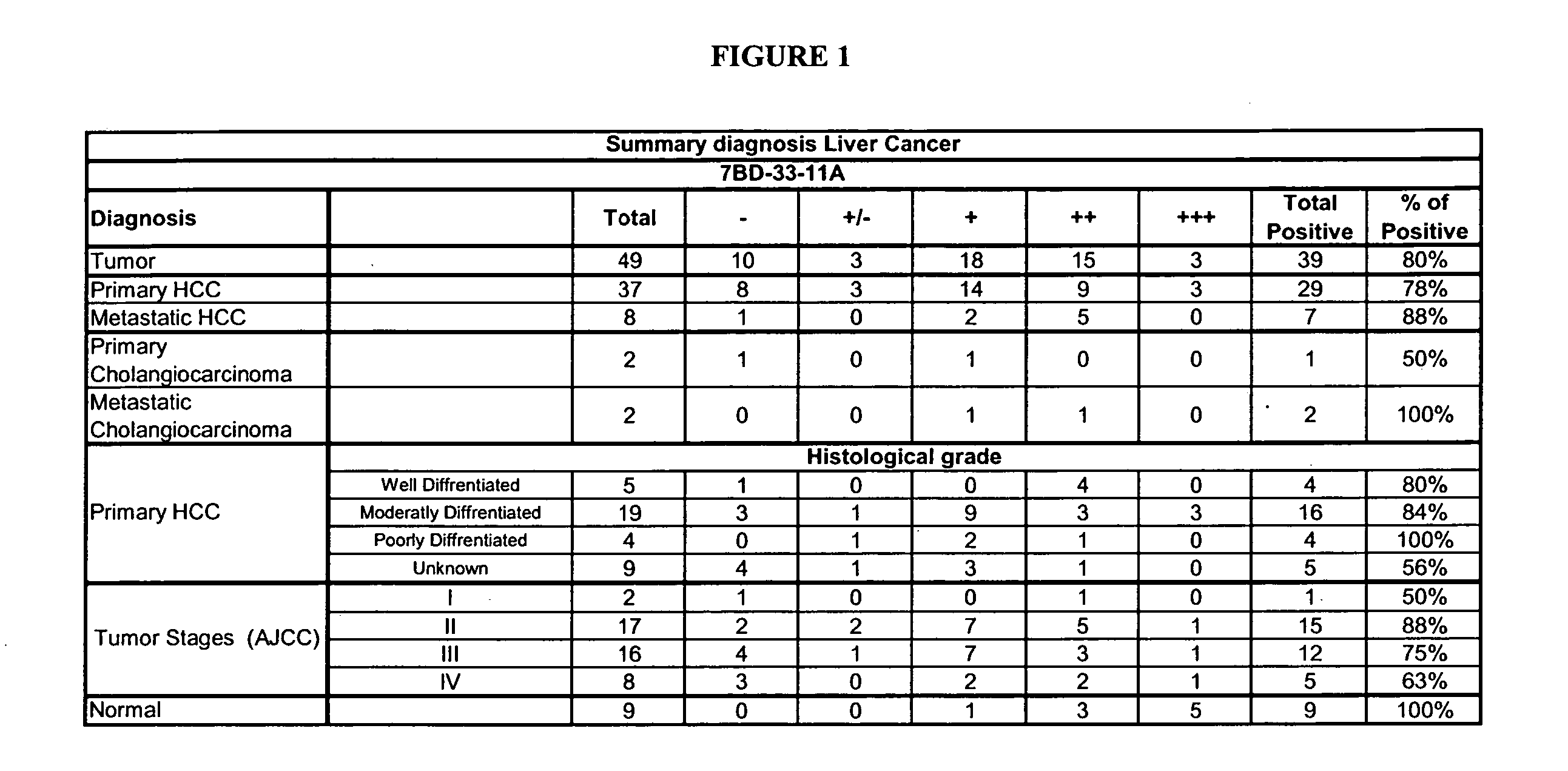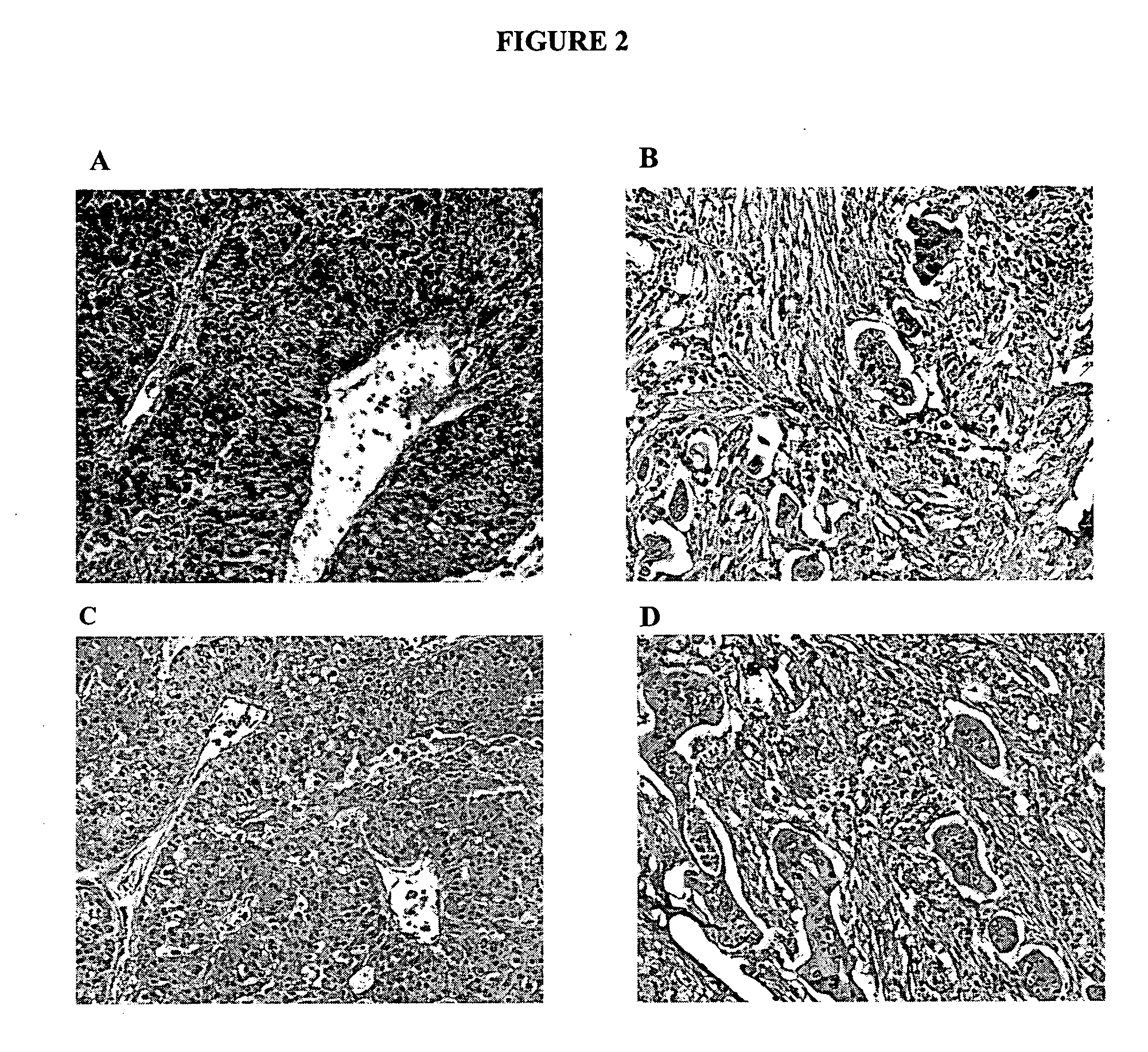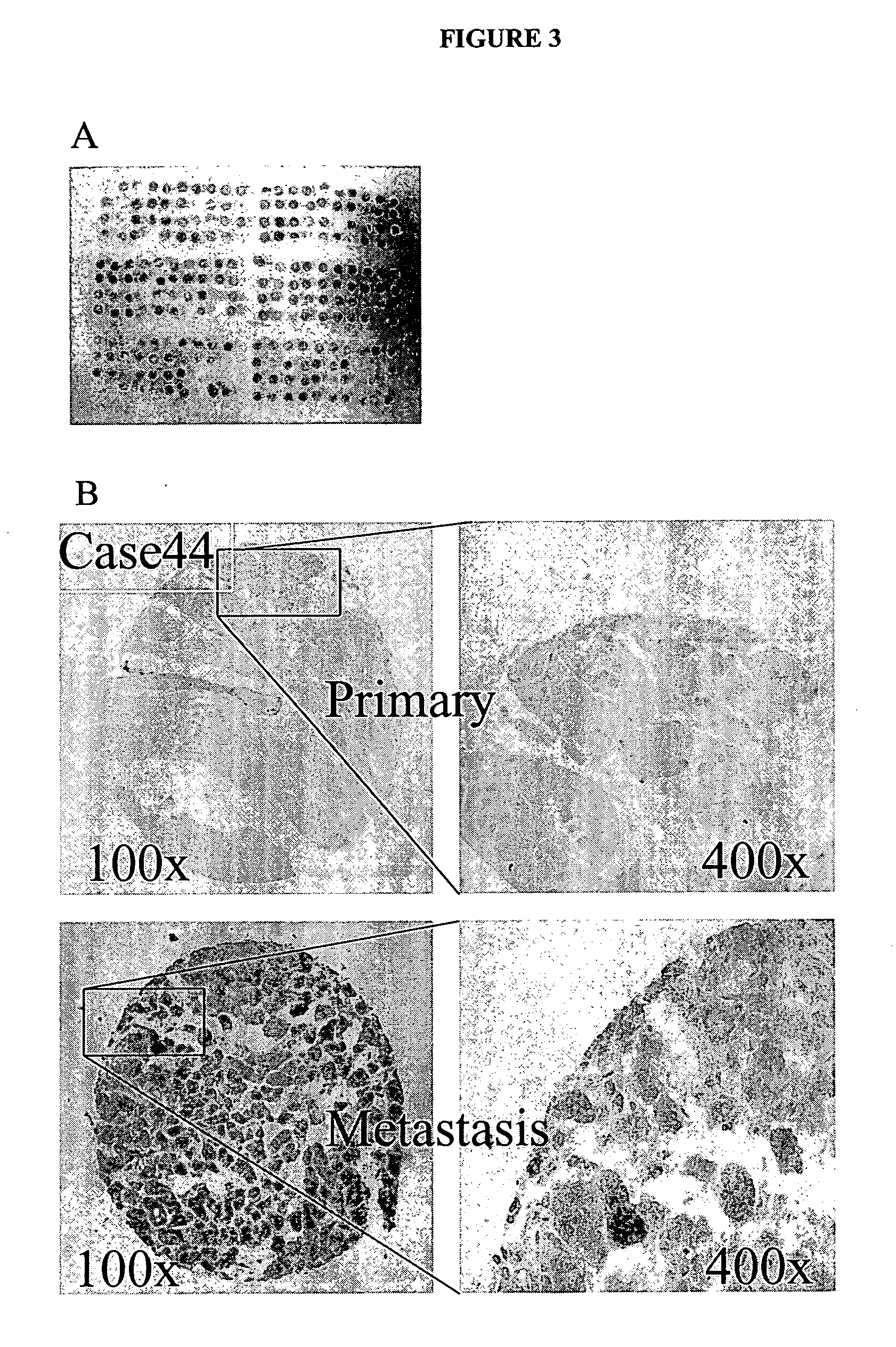Cytotoxicity mediation of cells evidencing surface expression of CD63
- Summary
- Abstract
- Description
- Claims
- Application Information
AI Technical Summary
Benefits of technology
Problems solved by technology
Method used
Image
Examples
example 1
Human Liver Tumor Tissue Staining
[0163] IHC studies were conducted to evaluate the binding of 7BD-33-11A to human liver tumor tissue. IHC optimization studies were performed previously in order to determine the conditions for further experiments.
[0164] Tissue sections were deparaffinized by drying in an oven at 58° C. for 1 hour and dewaxed by immersing in xylene 5 times for 4 minutes each. Following treatment through a series of graded ethanol washes (100 percent-75 percent) the sections were re-hydrated in water. The slides were immersed in 10 mM citrate buffer at pH 6 (Dako, Toronto, Ontario) then microwaved at high, medium, and low power settings for 5 minutes each, then left 15 minutes at room temperature and washed with PBS 3 times for minutes each. Slides were then immersed in 3 percent hydrogen peroxide solution for 10 minutes, washed with PBS three times for 5 minutes each, then incubated with Universal blocking solution (Dako, Toronto, Ontario) for 5 minutes at room tem...
example 2
Immunostaining on Hepatocellular Carcinoma Tissue Microarray
[0169] To further study the results obtained in Example 1, 7BD-33-11A binding was directly compared to human primary and mestastatic hepatocellular carcinoma tissue. With reference to FIG. 3, the human hepatocellular carcinoma (HCC) tissue microarray was constructed as outlined below. Briefly, tissue samples were obtained from Eastern Hepato-biliary Surgery Hospital (Shanghai, China) from 1995 to 1999 and were embedded in paraffin using standard protocols. The embedded tissue samples were freshly sectioned and stained with hematoxylin and eosin. The representative regions of lesion were reviewed carefully and defined by two pathologists. Based on the clinicopathological information, specimens were grouped in tissue cylinders and a diameter of 0.6 mm was taken from the selected regions of the donor block and then punched precisely into a recipient paraffin block using a tissue array instrument (Beecher Instruments, Silver ...
example 3
Immunostaining on 50 Cases of Paraffin-Embedded HCC Tumor Tissues
[0171] To determine the correlation of CD63 expression with several clinical pathological features, immunostaining was performed on 50 cases of paraffin-embedded human HCC clinical samples, obtained during 1999 to 2001 from the Department of Surgery, University of Hong Kong Medical Centre, Queen Mary Hospital, Hong Kong, with the 7BD-33-11A antibody (FIG. 5).
[0172] Cytoplasmic expression of CD63 was determined by two independent observers who visually assessed the percentage of stained tumor cells as well as staining intensity. The percentage of positive cells was rated as follows: 2 points, 11-50 percent positive tumor cells; 3 points, 51-80 percent positive cells; and 4 points, >81 percent positive cells. Staining intensity was rated as follows: 1 point, weak intensity; 2 points, moderate intensity; and 3 points, strong intensity. Points for expression and percentage of positive cells were added, and specimens wer...
PUM
| Property | Measurement | Unit |
|---|---|---|
| molecular weight | aaaaa | aaaaa |
| molecular weight | aaaaa | aaaaa |
| median time | aaaaa | aaaaa |
Abstract
Description
Claims
Application Information
 Login to View More
Login to View More - R&D
- Intellectual Property
- Life Sciences
- Materials
- Tech Scout
- Unparalleled Data Quality
- Higher Quality Content
- 60% Fewer Hallucinations
Browse by: Latest US Patents, China's latest patents, Technical Efficacy Thesaurus, Application Domain, Technology Topic, Popular Technical Reports.
© 2025 PatSnap. All rights reserved.Legal|Privacy policy|Modern Slavery Act Transparency Statement|Sitemap|About US| Contact US: help@patsnap.com



